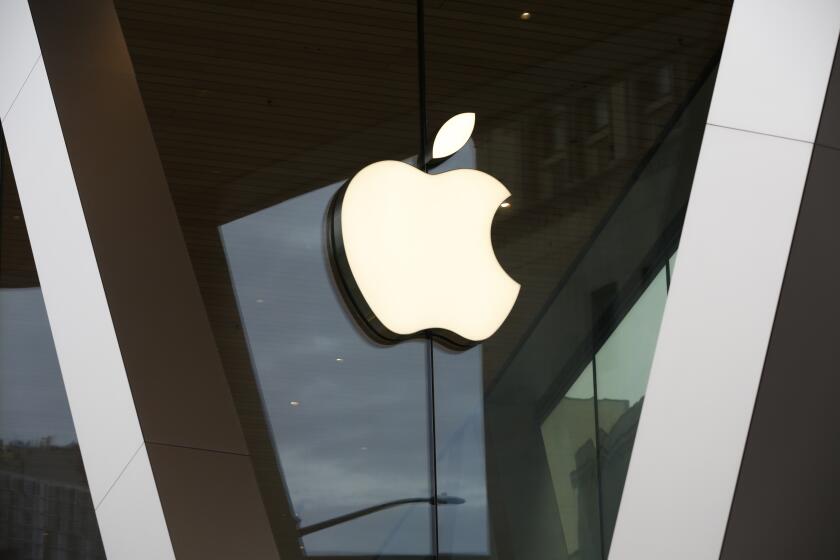Going Via Channels
- Share via
La Choy noodles, Vans sneakers and toilet paper have nothing to do with selling computers. But Packard Bell NEC is incorporating them into a series of campy interactive CD-ROMs that are designed to polish the Sacramento-based company’s image among salespeople at retail chains.
The three CD-ROMs feature a heavy helping of entertainment, including an old television commercial for the noodle maker and a quirky look at tissue labels. Mixed in with the entertainment are gentle nudges that are supposed to make salespeople more willing to push Packard Bell’s computers.
The innovative approach--blending entertainment with humor and mailing the CD-ROMs to store employees at home--is part of what manufacturers and retailers call channel marketing.
Each month, IBM, Compaq, Hewlett-Packard and other manufacturers swamp computer retail chains like CompUSA with hundreds of product-support programs designed to educate and motivate retail salespeople.
*
Programs run the gamut from printed brochures to sophisticated CD-ROMs and closed e-mail systems between manufacturers and retailers. Manufacturers push programs into high gear during the summer months as students return to school, and the effort culminates as consumers fine-tune holiday gift lists.
“Throughout the year you train general marketing messages at salespeople,” said David Baumgarten, retail marketing manager for Intel Corp. “And you continue to aggressively ramp up into the third week in November.”
The holiday season can generate about a third of the computer industry’s annual sales. But the wave of new products coming into the market dovetails with an influx of temporary salespeople, forcing manufacturers and retailers to “make an added emphasis in terms of training,” Baumgarten said.
But channel marketing is problematic because cost-conscious retailers balk at pulling their people from the floor and few salespeople are inclined to bring material home.
“It’s a daunting task for both manufacturers and retailers,” said Stephen Baker, an analyst with PC Data Inc., a Reston, Va. market research firm. “Turnover in the sales ranks is dramatic, which means education is needed. Yet margins are too low to support very much of it.”
Retailers say they must muzzle aggressive manufacturers whose product pitches include rewards for salespeople who push their lines at the expense of equivalent models that can carry fatter profit margins.
Store operators also frown on programs that simply shift consumers from one brand to another. “We want the whole pie to grow bigger,” said an executive at one major retail chain. “And that can happen with good channel marketing.”
A decade ago, manufacturers were able to send representatives to the store to demonstrate products for salespeople. One-on-one training still occurs, but the retail sector has grown too large for on-site training alone.
And as they turn to CD-ROMs and Web sites, manufacturers and retailers are constantly struggling to dress up their pitches in innovative ways.
“It’s gotten to the point that you’ve got to be extremely creative with the packaging, just to make sure they take notice and don’t just simply pitch your things into the wastebasket,” said Laura Miller, regional manager for Maritz Inc., a St. Louis-based company that develops sales programs for manufacturers.
*
Rather than distributing thick technical volumes, savvy marketers hammer away at a limited number of sales points in which they believe their products to be superior to the competition.
The goal is to arm salespeople with enough information to answer questions from shoppers who are increasingly likely to be comparison-shopping.
“Stand in the aisles at CompUSA and you’ll be amazed at how many people walk in and say, ‘Direct me to the best deal,’ ” said Tony Amico, who tracks channel marketing programs for International Data Corp., a Framingham, Mass.-based market research firm.
Retail industry observers say manufacturers are starting to install in-store kiosks where customers can get answers to questions that salespeople can’t field.
Industry observers credit Packard Bell with breaking new ground with the “Home Delivery” program that made its debut last summer.
Packard Bell tries to mail its discs--which are packaged in eye-catching boxes that look like carryout containers for pizza, chicken or Chinese restaurants--directly to employees’ homes.
The company is betting salespeople will be more likely to spend time with its discs if they get them at home. And, observers say, Packard Bell is accumulating home addresses for employees in an industry where salespeople frequently switch employers.
But the home-mailing strategy has generated mixed results, because retailers generally are reluctant to give employee addresses to manufacturers.
Packard Bell won’t say which chains approved home mailings, but at least one major chain restricted distribution to in-store employee mailboxes.
Packard Bell also broke ranks with traditional training programs that focus strictly on education. The three discs use a format similar to that of Santa Monica-based Launch, a monthly CD-ROM magazine that drops occasional advertisements into discs jammed with music, interactive interviews and comedy bits.
Sales associates who drop Packard Bell’s discs into their computers have the choice of exploring or ignoring product messages as they bounce between schmaltzy comedy skits and cutting-edge rock videos.
Packard Bell executives say that computer salespeople are naturally drawn to high technology and that they are more at ease with CD-ROMs than printed material or a videotape.
*
“This approach is not a bad idea,” Baker said. “It’s got to be more effective than simply dumping a bunch of printed material at the [retail chain’s] corporate headquarters and hoping that it gets distributed at the store level.”
Packard Bell reports promising early results for the discs. Two-thirds of salespeople who have popped the discs into their computer spend an average of four sessions poking around, with each session lasting more than 20 minutes.
“What we’re getting is someone’s undivided attention at home, without any other distractions,” said Lee Rogan, an executive with b. little & Co., the New York-based marketing company that developed Packard Bell’s CD-ROMs.
Packard Bell Senior Vice President Mike Gold, a former Saatchi & Saatchi executive, acknowledged that the CD-ROMs and their elaborate packaging are expensive. So, observers say, are the cartons; the Chinese takeout container, for example, includes a menu, napkin and hand wipe emblazoned with Packard Bell’s logo and sales material, along with a fortune cookie predicting good things for the company.
Packard Bell hasn’t made a decision on whether additional CD-ROMs will be created. But Gold said he is happy with the results.
“We’re getting a big enough bang for our buck,” Gold said. “We’re learning how people feel about our brand, and the results are very encouraging.”
(BEGIN TEXT OF INFOBOX / INFOGRAPHIC)
Computer Sales
About a third of all retail comuter sales traditionally occur during the holiday season.
October ‘97: 498,195
Source: PC Data




